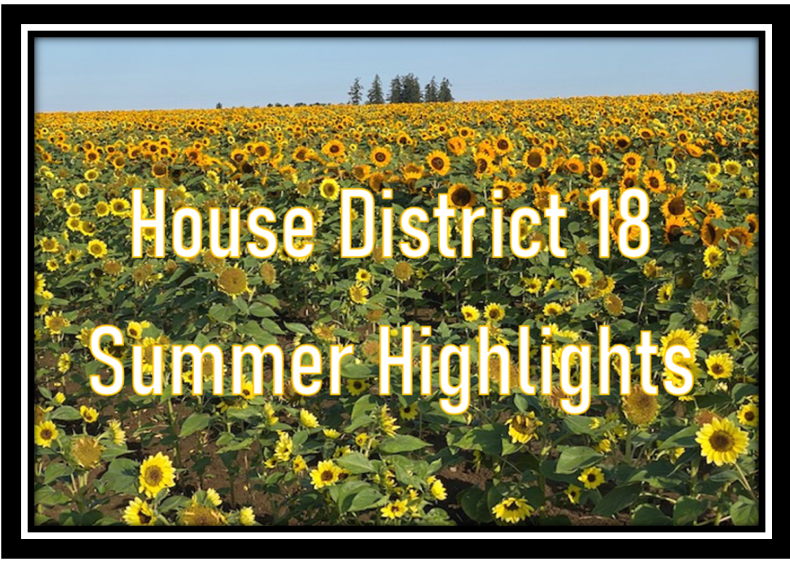
Dear Friends and Neighbors,
I hope your summer has been enjoyable. The legislative interim, referred to as the time between sessions, has been filled with meetings, tours, conferences, and a number of events. I have enjoyed connecting with constituents and industry leaders throughout the district all summer long.
August’s newsletter highlights some of the events and tours I have been a part of. Your warm welcome and engaging conversations about legislative decisions that impact you is an important part of my interim work. Your voice and your vision can help shape Oregon’s future. Please keep sharing your thoughts and ideas. We have a lot of work ahead - together we can do it!

Best wishes to you as the summer sets and we look to the fall season ahead. September 8th @ 11:59 pm begins what is called the “blackout period” where legislators running for office are prohibited from using public resources to communicate with their constituents 60 days prior to an election. I look forward to connecting with you again in my November newsletter. Until then, enjoy the rest of your summer and have a safe and Happy Labor Day.
Sincerely,
Rick Lewis
|
 State Representative
House District 18
Oregon’s Christmas Tree District
VIEW PREVIOUS NEWSLETTERS: Click Here

The St. Paul Parade and Rodeo kicked off summer in the Willamette Valley in style! It was a lot of fun to meet new friends and reconnect with old ones. I was especially fortunate to run into two fellow veterans who continue to serve our communities. Thank you for your service and for all you do!
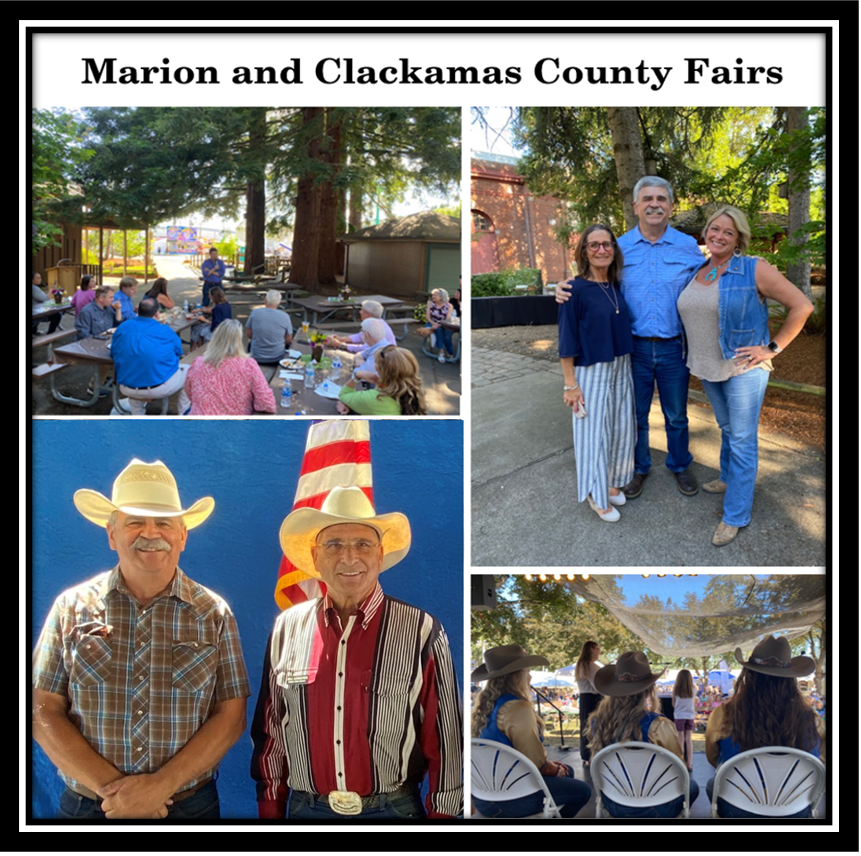
It was an honor to attend the Marion County Fair opening and evening barbeque with my legislative colleagues, Representative Moore-Green and Representative Scharf (pictured top right). Thank you to the Marion County Commissioners and Fair Board members for the invite and your hospitality.
 |
|
Established in 1906, Clackamas County Fair and Rodeo was “Back in the Saddle,” celebrating 116 years. Senator Kennemer and I (pictured above lower left) joined the opening day ceremonies in our best rodeo gear. Thank you to all for the warm welcome and an enjoyable afternoon. |

On July 15th, I attended a tour of Coleman Hop Farm in St. Paul, the Scenic Valley Farm in Gervais, and the Crosby Hop Farm Cooling Room in Woodburn during Oregon Hop Commission’s annual field day. Exciting things are happening in Oregon’s hop industry.

Founded in 1964, the Oregon Hop Commission (OHC) is dedicated to enhancing the Oregon hop industry by expanding opportunities for growth through research, education and promotion. In order to maintain economic stability of hop production in Oregon, the main objective of the OHC is to provide sufficient research through agricultural and financial evaluations. The commission is completely grower-funded and is facilitated by seven growers, one dealer/handler, and one public member. The continued success and progress of Oregon grown hops is a direct result of the efforts of the OHC.
|
Here are some fun facts provided by the OHC and Oregon Encyclopedia:
- Oregon is the second largest hop producing state in the United States.
- The hop-growing region of the state is exclusively located in Oregon's Willamette Valley. Both the appearance and climate is similar to that of Germany's hop-growing regions, and both are located on the 45th parallel. The valley lies between the Coast Range and Cascade Mountains and is one of the most productive agricultural areas in the world.
- Hops are a vital aspect to the economy of the Pacific Northwest, producing nearly the entire U.S. supply and greater than 30% of the world’s supply.
- From 1905 to 1915, Oregon held the distinction as the nation's largest hop producer. Despite Prohibition and the Great Depression.
- Hops are grown commercially only in Marion and Polk counties, where fewer than 30 families work less than 400 acres per crop on average. A majority of the families are third and fourth generation hop growers.
- While hop culture has become increasingly sophisticated, with irrigation and fertilization technologies, the basic agricultural method of training vines to a wire trellis system has remained largely the same for 100 years.
You can read more about Oregon Hop Field Day and Oregon’s hop industry in the Capital Press article by George Plaven here. A video discussing Oregon’s hop history, the planting and harvest process is found here. Take a look – I think you will find it fascinating!

On August 4th, I attended the Oregon Association of Nurseries (OAN) Bountiful Farms Tour. It was a beautiful day in the district to meet with local growers to talk with them about their work and legislative priorities. The photos above were taken at the beautiful Alpha Nursery in Northeast Salem, located right here in House District 18.
OAN is a non-profit trade association that represents more than 600 individual nursery stock producers, retailers, landscapers and related companies serving the nursery and greenhouse industry.
The OAN is the main voice for Oregon's nursery and greenhouse producers, re-sellers, transporters, retailers and suppliers. The OAN is governed by a volunteer Board of Directors with oversight by a seven-member Executive Committee. Day-to-day functions are managed by an executive director and a paid professional staff.

This year’s Homer Davenport Days served up a host of hometown family fun. Silverton’s annual summer festival celebrates the life and times of Silverton’s favorite son—and Oregon’s first media super star—Political Cartoonist Homer Davenport. The three day event included a community parade, arts and crafts, food court, live music, Homer’s own Brewfest, Davenport Races and an International Cartoon Contest featuring entries from around the globe.
Again, this year I had the privilege to serve on a panel of judges to select the winners of Homer C. Davenport International Cartoon Contest. Congratulations to all our winners and a big thank you to Gus Frederick for his dedication and work to organize the contest to keep this Silverton summer tradition alive. This year’s winning entries can be viewed here.

This story is a good example of how your voice is at work in shaping Oregon’s future.
In late June, the Oregon Department of Forestry (ODF) and Oregon State University (OSU) released the Oregon Statewide Wildfire Risk Map and sent notifications to property owners in the extreme and high risk classification.
The map was part of SB 762, the state’s omnibus wildfire bill passed in the 2021 legislative session. The measure directed the Oregon State Fire Marshal (OSFM) to establish minimum defensible space code standards and where those may apply, which are areas identified in both the high or extreme risk and in the Wildland Urban Interface (WUI). The goal of the bill was to encourage wildfire mitigation at a property level, promote defensible space, home hardening, and to inform and incentivize Oregonians.
The map generated a significant backlash from property owners who expressed concern about the impact the map has on their home values, insurance rates, policy renewals, and real estate transactions. Other flaws in the map involved irrigated and managed agricultural lands designated as high or extreme risk, the same as neighboring unmanaged lands and more. The outcry from more than 2,000 Oregonians resulted in ODF holding multiple community information sessions and the wildfire risk map being temporary withdrawn on August 4th for further refinement.
The appeals process to those who received notification has also been suspended. Appeals already submitted by property owners will be used to identify areas where refinements may be needed to the risk map. Once the map is refined, ODF will bring the draft of the updated map to communities for discussion and input. After another round of revisions based on local input, the map will be finalized which will start a new notification and 60-day appeals process. You can visit the wildfire risk map appeals page to learn more about what will happen to the appeals that have been received.
Please note, this decision does not impact the code adoption processes currently underway through Office of the State Fire Marshal for defensible space or Building Codes Division for home hardening.
There is a lot of work ahead to get this right. I’ll be watching this issue closely and I will be working in the coming session to make the necessary policy changes so that Oregonians across the state can rely on accurate information to assess and mitigate fire safety concerns involving their property.
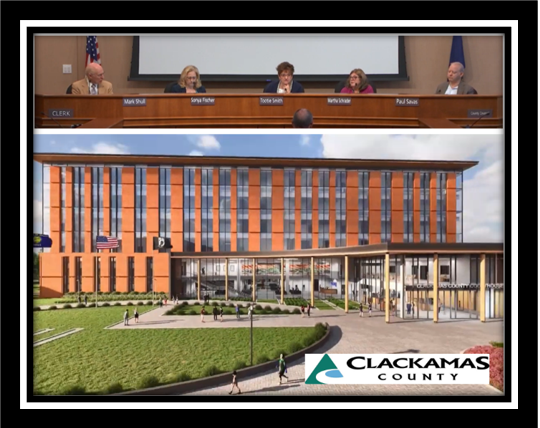
On June 30th, the Clackamas County Board of Commissioners approved selecting Fengate PCL Progress Partners (FP3) as the successful proposer to design, build, partially finance, and maintain the new Clackamas County Courthouse for 30 years. Clackamas County and FP3 will enter into a public-private-partnership and is the first in Oregon to use this type of partnership to construct a courthouse. This project has been years in the making and involved the hard work of federal, state, and local partners. I am grateful for the efforts of all the parties who have helped move this project forward.
The current courthouse built in 1936 holds earthquake risks, safety concerns, security challenges, and delays justice for county residents. Construction of the new courthouse is expected to be completed in 2025 and cost $313 million – a significant increase in price caused by inflation.
|
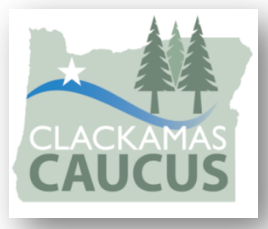
The Oregon State Legislature committed $94.5 million for the project in 2021 from the Oregon Courthouse Capital Construction and Improvement Fund (OCCIF), as part of a program to fund half the project, previously estimated at $189 million. Securing these investments was a bipartisan effort of the Clackamas Caucus. As co-chair of the Oregon Legislature’s bipartisan Clackamas Caucus, I am prepared to engage with my legislative colleagues to offer full support to the county and Oregon Judicial Department’s legislative efforts to secure additional funding from the OCCCIF in FY 23/25 during the 2023 Legislative Session.
|

On July 1st Oregon’s Office of Emergency Management officially began operating as the Oregon Department of Emergency Management (ODEM), bringing a new era of emergency management to the state. This change is a result of HB 2927, passed in the 2021 legislative session, establishing OEM as a stand-alone cabinet-level department reporting directly to the governor. The agency previously served as a division of the Oregon Military Department since its founding in 1981.
In recent years, Oregon has experienced a variety of natural disasters. This reform to Oregon’s Emergency management system has been a key area of focus of my work as the Vice-Chair of the House Veterans and Emergency Management committee where this concept originated. I am proud of the work this update represents to modernize Oregon’s emergency structures so that our emergency response efforts are more efficient in times of crisis.
The Oregon Department of Emergency Management coordinates and maintains a statewide emergency services system for emergency and disaster communications. OEM is made up of four sections: Director’s Office, Technology and Response, Operations and Preparedness, and Mitigation and Recovery Services.
It is the mission of the Oregon Department of Emergency Management to lead collaborative statewide efforts, inclusive of all partners and the communities, to ensure the capability to get help in an emergency and to protect, mitigate, prepare for, respond to, and recover from emergencies or disasters.
You can read more about the state’s new era of emergency management in OEM’s official press release here.
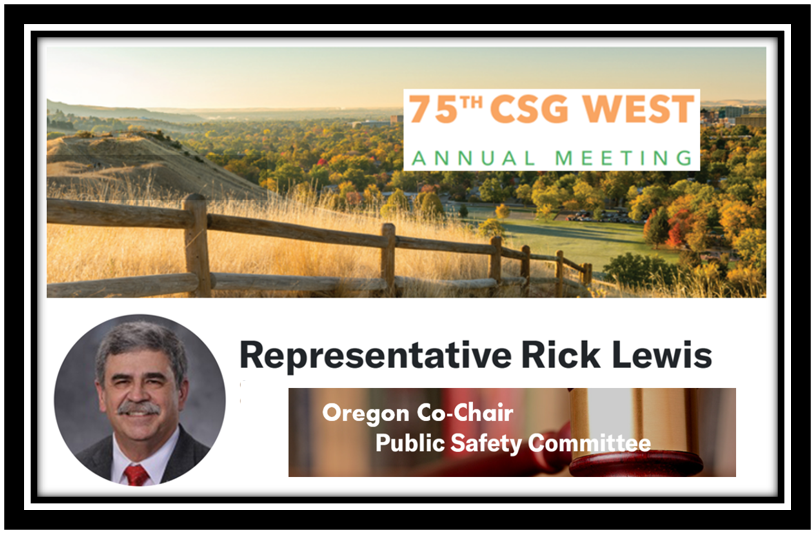
In July, I attended the Council of State Governments West (CSG West) meeting in Boise, Idaho. This annual conference brings together state legislators, legislative staff, and partners from across the West to learn, discuss, and share insights on policy issues affecting the region.
It is a honor to Co-Chair the CSG West Public Safety Committee on behalf of the western states. This policy committee provides a forum in which legislators engage in the exchange of information and ideas on relevant public safety policy at all levels of government. It represents state government on key regional and national issues, promotes the importance of public safety concerns, and works toward collaborative solutions.
Below are a few snapshots from the conference:
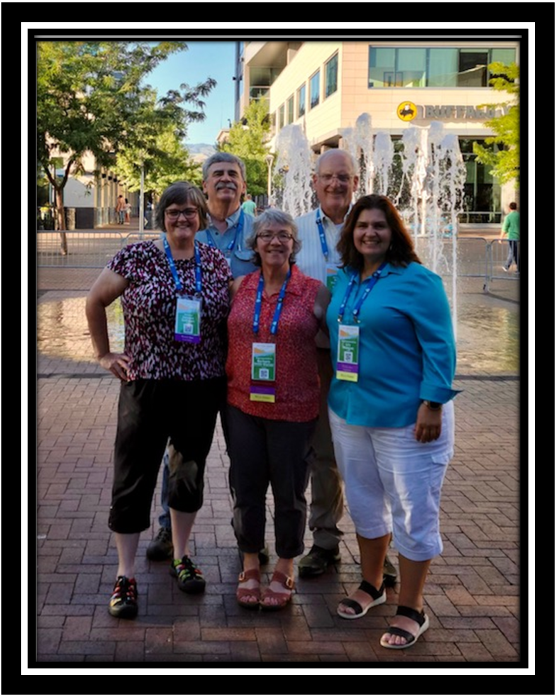 |
|
Pictured with my legislative colleagues from Oregon. Back Row (L-R): Rep. Rick Lewis and Senator Bill Hansell. Front Row (L-R): Sen. Janeen Sollman, Rep. Barbara Smith Warner and Rep. Lily Morgan. It was great to spend time together away from the hustle and bustle of session.
|
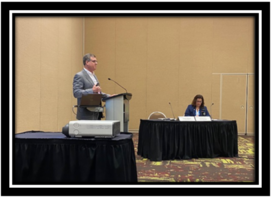
At the podium, Oregon/Idaho HIDTA Director Chris Gibson is speaking to the CSG West Public Safety Committee. Seated at the table is Representative Lily Morgan who serves with me on the Oregon House Judiciary Committee. Thank you Director Gibson for answering my call to speak to the committee about the illicit drug problems plaguing the western states. And thank you to Rep. Morgan for speaking about the southern Willamette Valley illegal marijuana cartels and the human trafficking problems in our state.
|
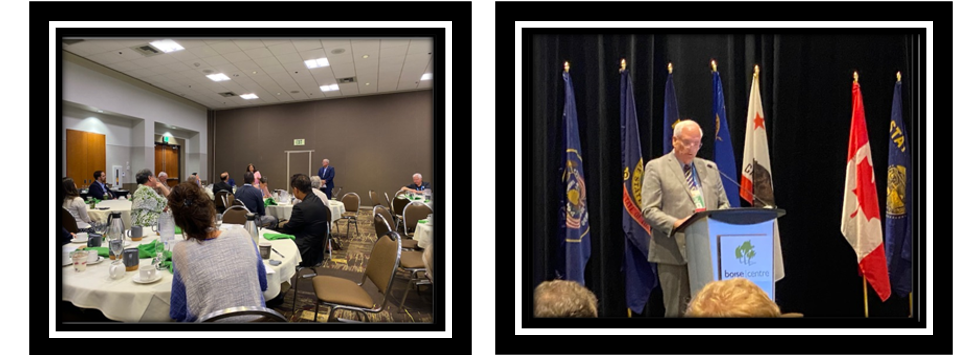
The photo, top left, is from the CSG West Executive Leadership meeting I attended as part of my duties as Co-Chair of the GSG West Public Safety Committee. Top right photo is of Senator Hansell addressing conference participants.
 |
|
There was also a special tribute honoring the late Oregon Representative Gary Leif (pictured center bottom). Rep. Leif passed away last year after a long battle with cancer. His presence in the Oregon legislature is greatly missed.
|
Our Story is One of Excellence - CSG West
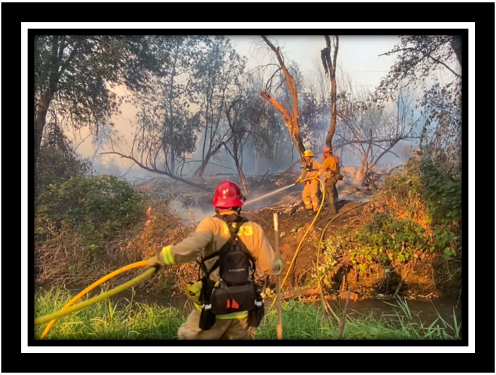
There are a total of 28 active wildfires burning in Oregon. This past weekend, the Governor declared a state of emergency due to the imminent threat of wildfire statewide. The declaration authorizes the Oregon Department of Forestry and the Office of the State Fire Marshal, in coordination with the Oregon Department of Emergency Management, to utilize personnel, equipment, and facilities from other state agencies in order to respond to or mitigate the effects of the wildfire emergency. The declaration allows state agencies to temporarily suspend any rules that impair the response to wildfires, if needed, and also allows the state to request assistance from other states through the Emergency Management Assistance Compact if necessary.
|
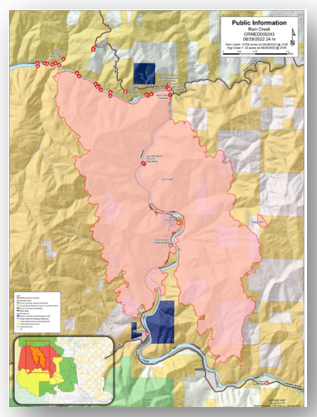
The largest active fire is the Rum Creek Fire west of Rand in the Rogue Wilderness. It has burned 10,050 acres and is 1% contained. There have been two injuries, one fatality, and three structures destroyed including one residence. The Governor invoked the Emergency Conflagration Act in response to the growth of the Rum Creek Fire. Rum Creek Fire Facebook page Josephine County Sheriff's Office Facebook page. More information is available here.
The second largest active fire is the Cedar Creek Fire west of Waldo Lake which has burned 7,654 acres.
|
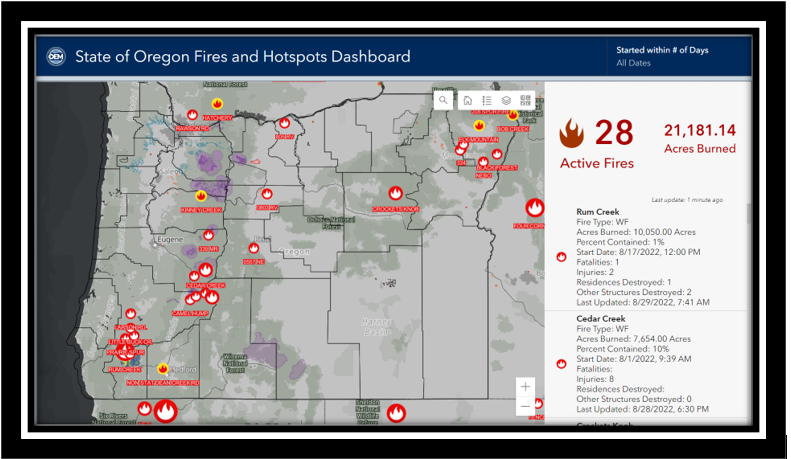
Find State of Oregon Fires and Hotspots Dashboard and full list of current conflagrations is available here. More information and daily fire stats can be found on the Northwest Interagency Coordination Center webpage here.
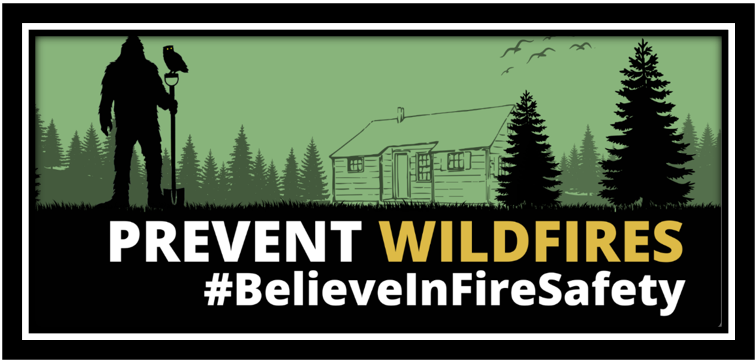
Oregonians know all too well that fire behavior can change rapidly under certain conditions. As warm dry weather is predicted to continue throughout much of the state, I urge you to stay informed and vigilant in doing all you can to be prepared and to prevent fires. You can access information on wildfire prevention and preparedness through the links below:
Disaster Recovery Resources: Call 833-669-0554 (toll-free) to connect with a disaster case manager or local housing navigator.

Tomorrow, August 31@ 9:00 am, the Office of Economic Analysis (OEA) is scheduled to release the September 2022 Economic and Revenue Forecast. You can watch a live stream of the meeting on OLIS here. The forecast documents will post to OEA’s webpage once they are released. You can also subscribe here to receive an email when the forecast posts to the site.
The Oregon Economic Forecast provides information to planners and policy makers in state agencies and private organizations for use in their decision making processes. The Oregon Revenue Forecast opens the revenue forecasting process to public review. It is the basis for much of the budgeting in state government. Forecast reports are issued four times a year: March, June, September, and December.
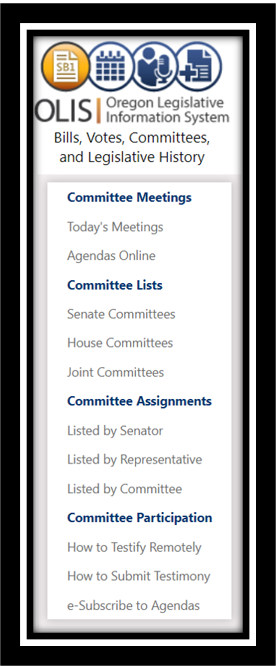 |
|
Legislators meet again September 20-23 for interim committee meetings to continue our work to prepare for the next session. Committee meetings will be held virtually and can be viewed live through the Oregon Legislative Information System (OLIS).
Oregon’s next long legislative session convenes in February 2023 and September 23rd is our first deadline to submit unlimited bill draft requests to Legislative Counsel for pre-session filing.
|
Students around the state are returning to school this month. This means we will be seeing more foot traffic in our neighborhoods and school busses on our roads. As kids make their way to and from school please keep a close watch in your travels to ensure their safety and yours.

Capitol Phone: 503-986-1418
Capitol Address: 900 Court St. NE, H-484, Salem, Oregon 97301
Email: Rep.RickLewis@oregonlegislature.gov
Website: http://www.oregonlegislature.gov/lewis
|